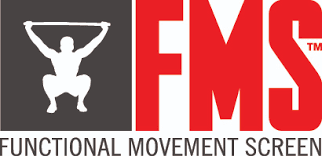Ever heard the cliche “an apple a day keeps the doctor away?” More accurately, a regular fitness routine is a great way to stay out of the doctor’s office. Lately I investigated the topic of fitness training and prevention of low back.
In my 7 years of practice, I have always maintained great relationships with trusted fitness providers in Burlington to help co-manage my patients. I truly believe that fitness is a vital extension of healthcare and a good fitness trainer can do just as much for your health as a chiropractor (excluding emergency procedures).
I believe that people who have never had back pain, currently have back pain, suffered from back pain in the past, andhave had back surgery will benefit from a proper fitness routine.
I want to provide you with a foundation of why fitness is so instrumental in your musculoskeletal health. From Spine-Health.com, this summary of fitness and health reveals how valuable regular exercise can be for your spine amongst other aspectsof health and wellness.
Spine-Health.Com
https://www.spine-health.com/wellness/exercise/exercise-and-back-pain
Benefits of Exercise
When done in a controlled, progressive manner, exercises for relieving back pain have many benefits, including:
- Strengthening the muscles that support the spine, removing pressure from the spinal discs and facet joints
- Alleviating stiffness and improving mobility
- Improving circulation to better distribute nutrients through the body, including to the spinal discs
- Releasing endorphins, which can naturally relieve pain. A frequent release of endorphins can help reduce reliance on pain medication. Endorphins can also elevate mood and relieve depressive symptoms, a common effect of chronic pain.
- Minimizing the frequency of back or neck pain episodes, and reducing the severity of pain when it does occur
Exercise as Prescription for Back Pain
An effective program of back exercises should be comprehensive, working the whole body even as it targets the back. Exercise can be thoughtof as any other health prescription: A qualified health professional will customize exercise based on a variety of factors. These factors typically include:
- the clinical diagnosis
- whether the painis considered mild, moderate, or severe
- the pain relief necessary to tolerate activity
- the frequency of prescribed exercises
- the correct form and healthy posture needed for performing exercises
Integrating Exercise with Medical Treatment
- Exercise and fitness are necessary for healing existing back problems, recovering from back surgery, and especially for keeping the back healthy to help prevent (or at least lessen) future episodes of back pain.
- Ideally, an exercise and fitness program should be integratedduring most phases of treatment for pain relief and to improve the overall health of patients. If the pain is severe, however, patients may first need to be treated for the pain beforestarting a back-exercise program.
Fitness and Treatment Considerations with Dr. Andy Van Hoewyk
Dr. Andy’s Key takeaways
- Selective Functional Movement Assessment (SFMA) figures out movement patterns from a clinical standpoint.
- The SFMA is a head-to-toe assessment to help bridge the gap from injury to return to sport or activities of daily living.
- Cervical Spine ROM
- Shoulder Mobility Test
- Toe Touch Test
- Standing Back Extension
- Standing Torso Rotation
- Single Leg Stance
- Overhead Deep Squat
- Ankle Dorsiflexion, Hip Stability of the muscles, Hip Mobility of the joint, Core Stability, Thoracic Spine Mobility are key to preventing low back pain.
Whether you are an avid athlete, desk jockey or active lifestyle person, integrating proper fitness with corrective exercises and body work is the key to preventing low back pain and other musculoskeletal conditions. I hope you gleaned some valuable insights to implement immediately for better health.


